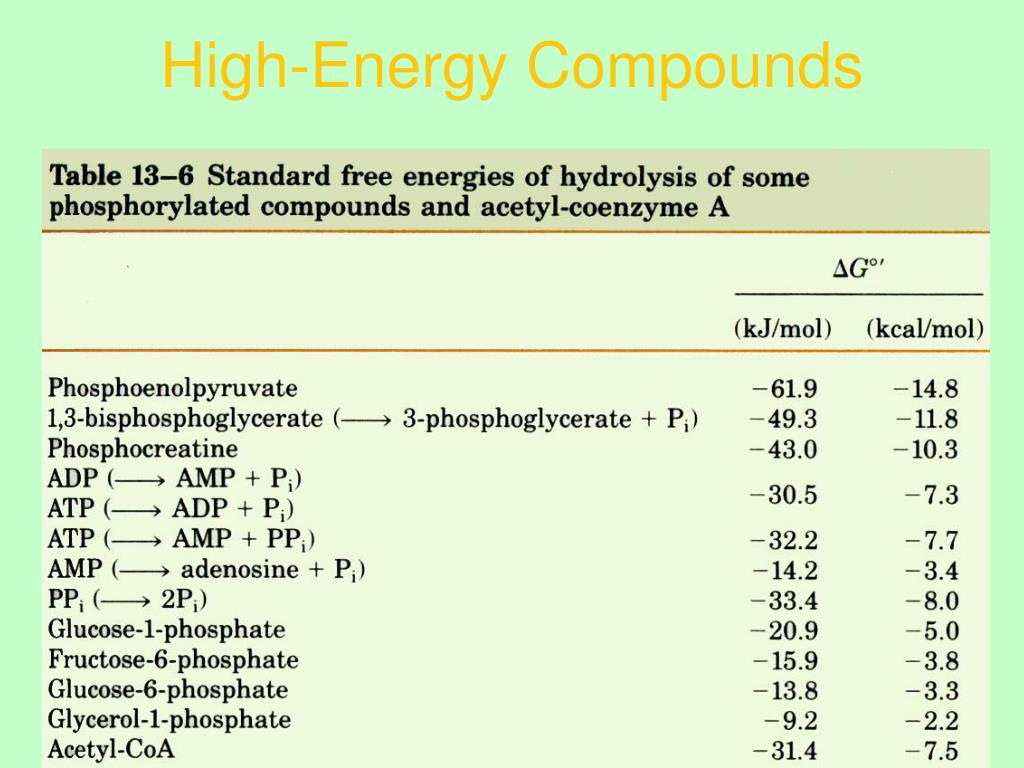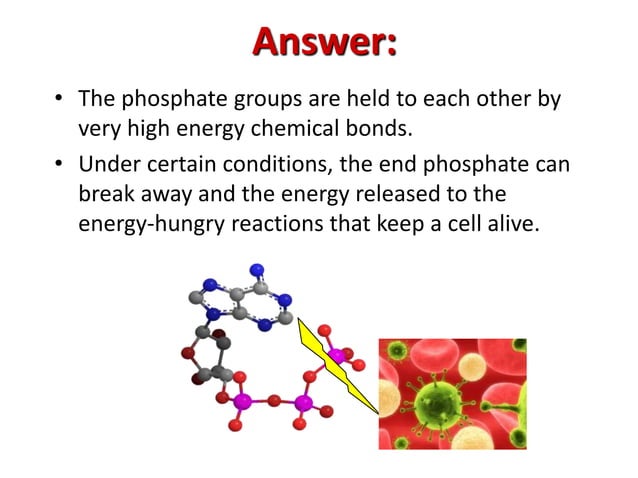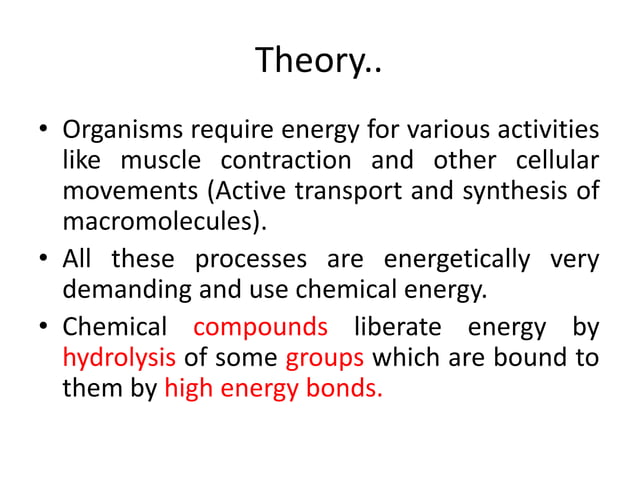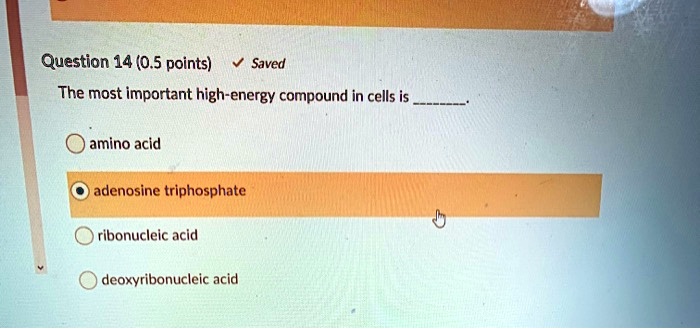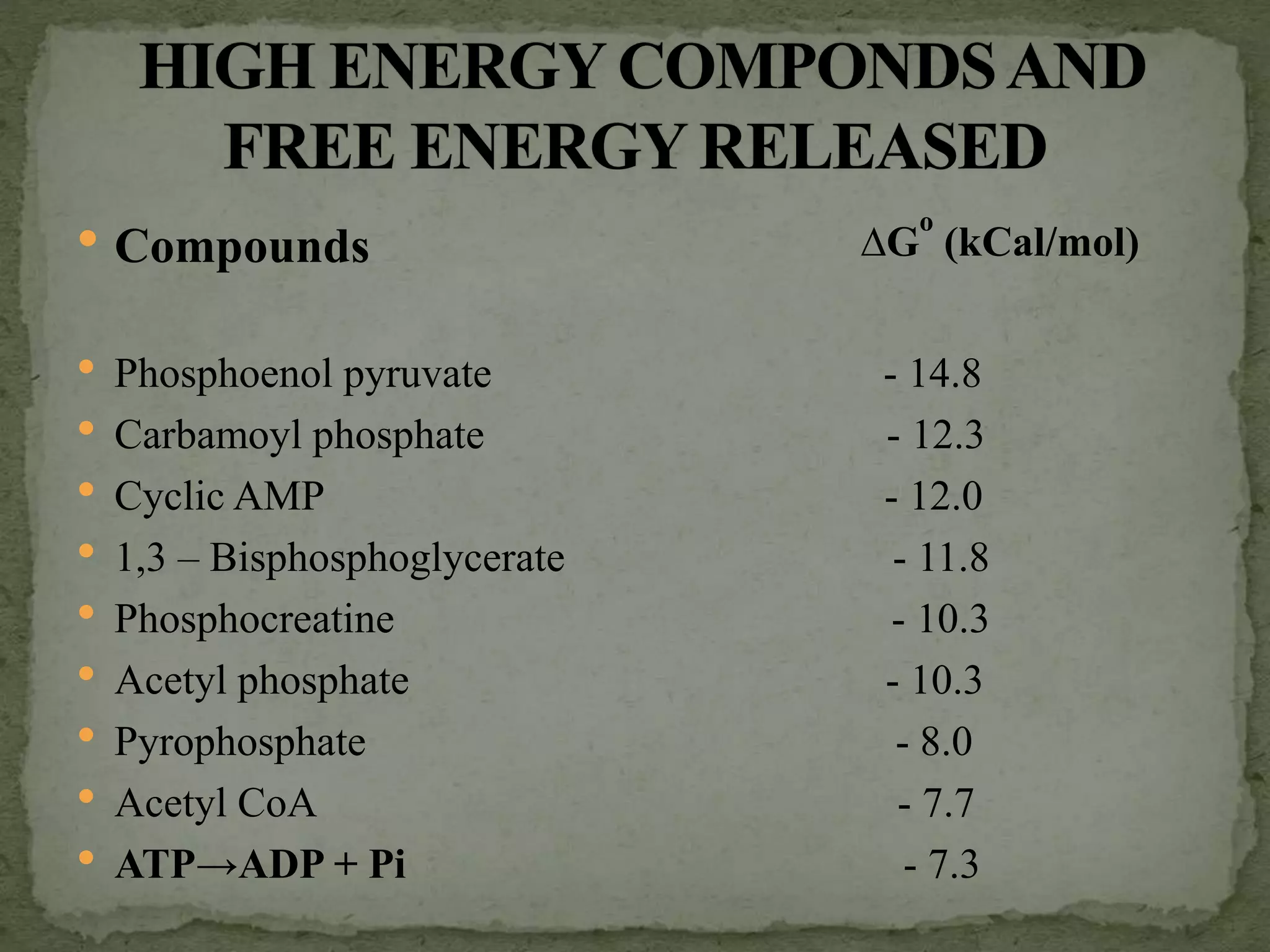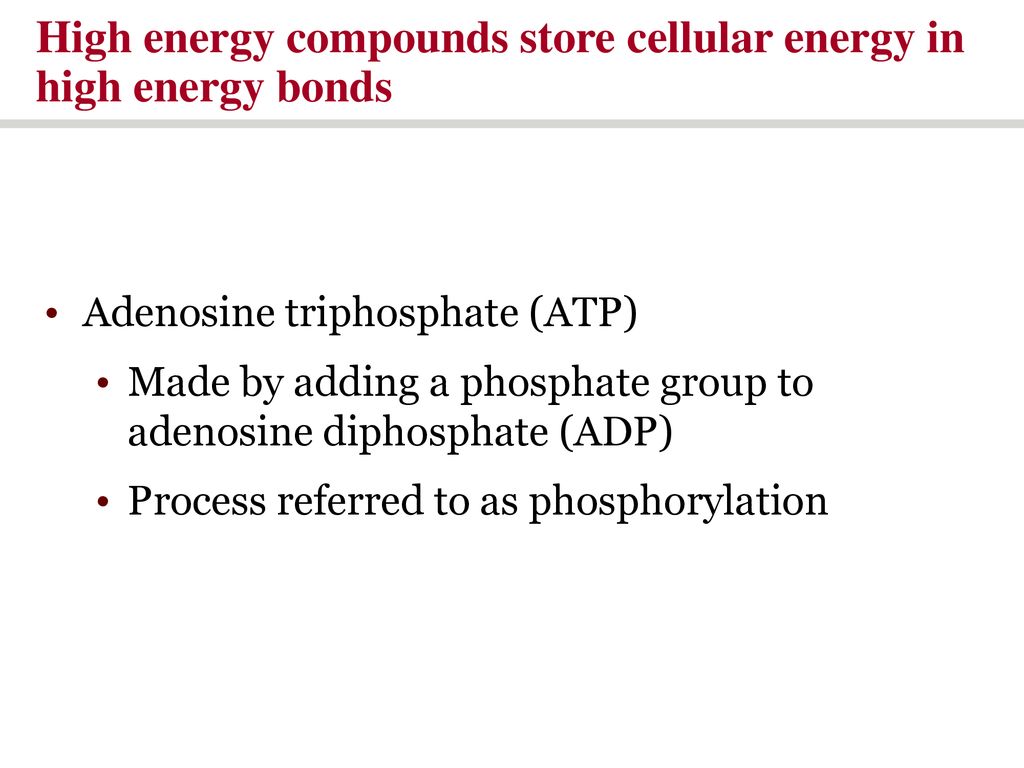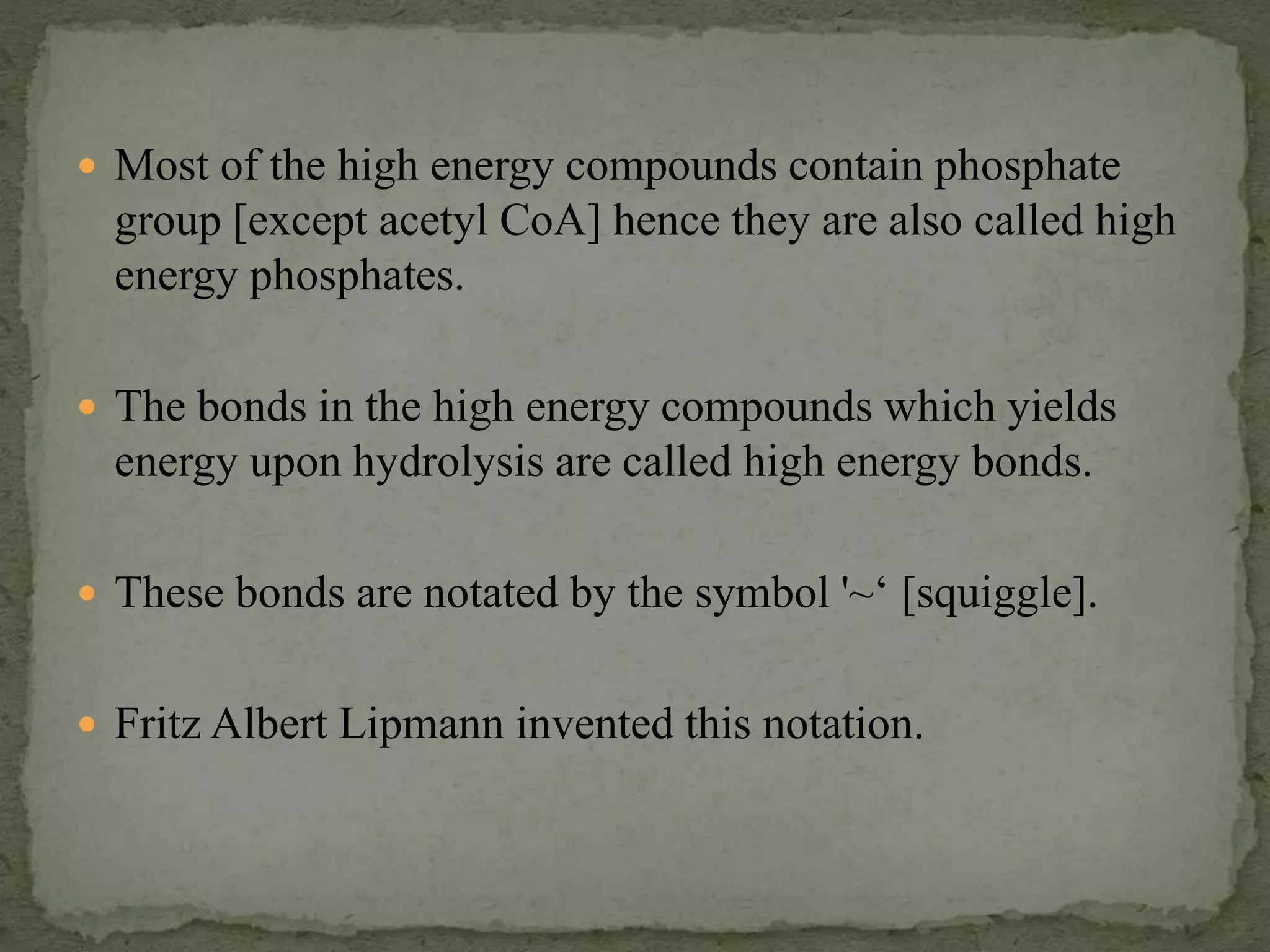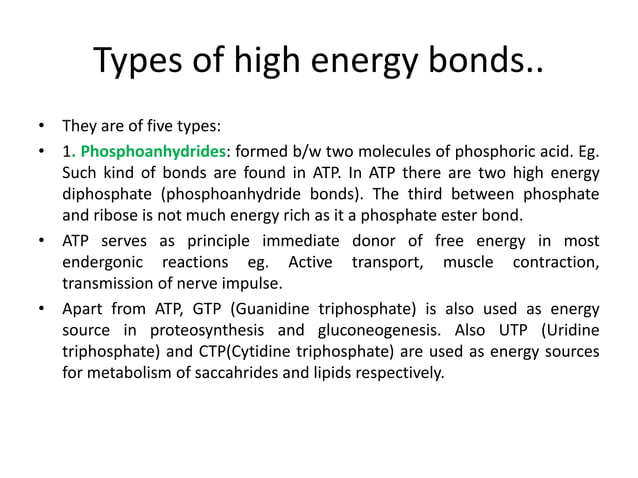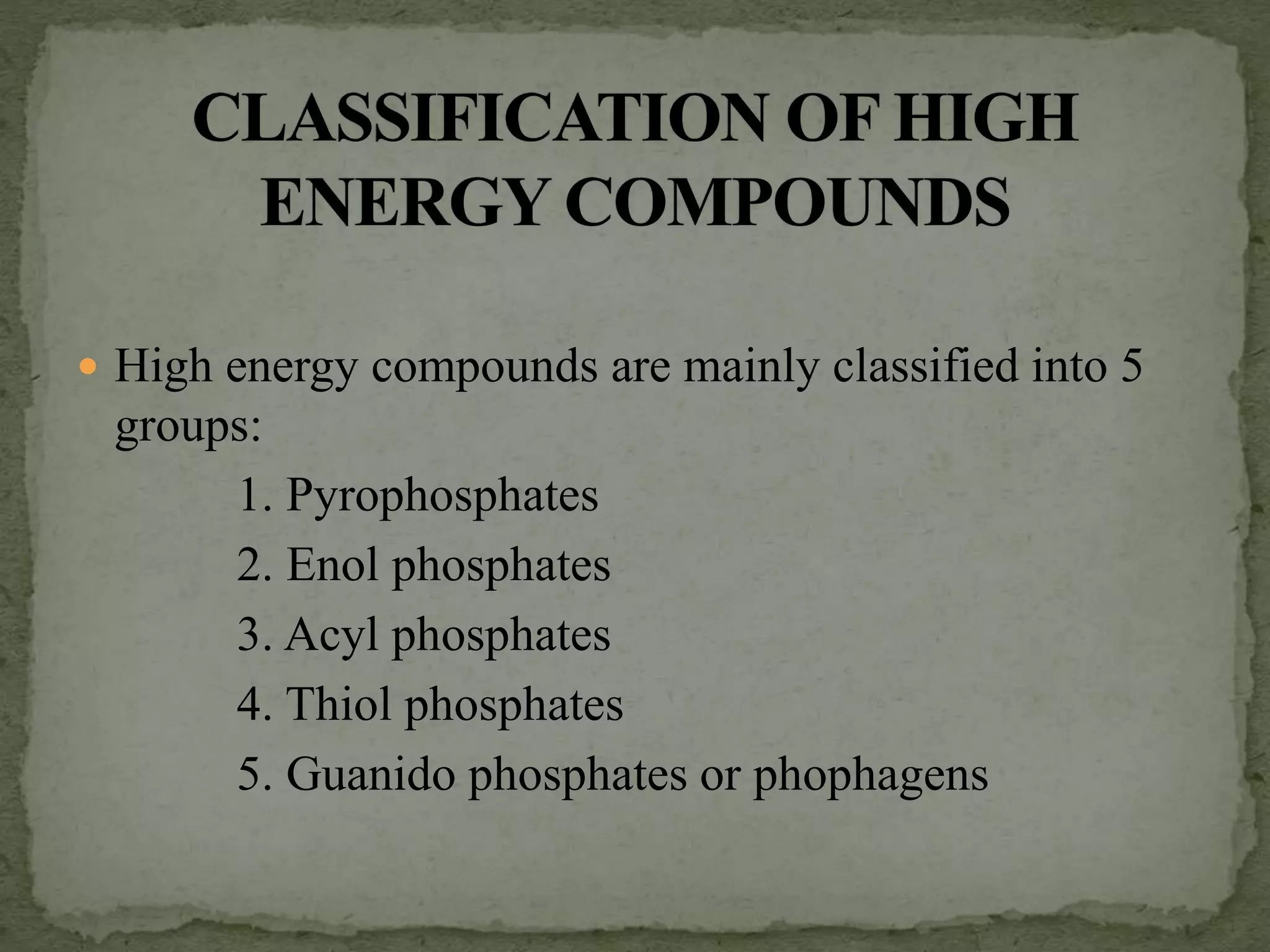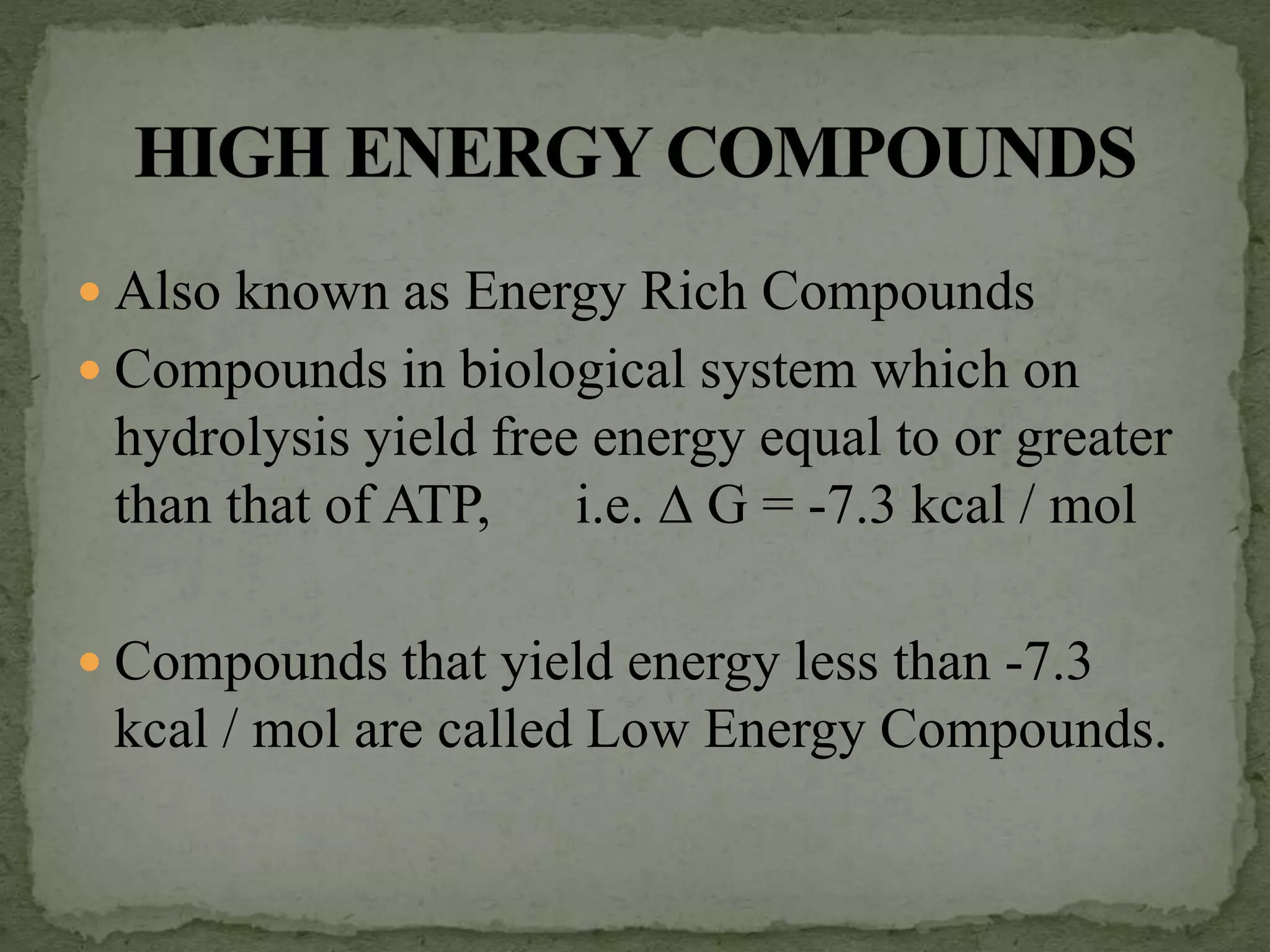The Most Abundant High Energy Compound In Cells Is

Imagine a bustling city, its streets teeming with vehicles of all shapes and sizes, tirelessly transporting goods from one place to another. Now, picture a single, universally accepted currency fueling all this activity, facilitating every transaction, every exchange of energy. Within the intricate metropolis of a cell, a similar dynamic plays out, with one molecule standing out as the primary energy currency: ATP, or Adenosine Triphosphate.
At the heart of every living cell, powering everything from muscle contraction to nerve impulse transmission, lies ATP. This seemingly simple molecule is the most abundant high-energy compound in cells, serving as the immediate source of energy for the vast majority of cellular processes.
The Energy Currency of Life
The discovery and understanding of ATP's role in cellular energy transfer is a story spanning decades of groundbreaking research. Scientists like Karl Lohmann, who first isolated ATP in 1929, and later Fritz Lipmann, who proposed ATP as the main energy transfer molecule in 1941, laid the foundation for our current understanding.
Lipmann's work, in particular, was pivotal, earning him a share of the Nobel Prize in Physiology or Medicine in 1953. Their findings unveiled a fundamental truth about life itself: that energy, at its most basic level, is often exchanged in the form of this single, remarkable molecule.
ATP is not just a molecule; it's a dynamic system. It's constantly being recycled, used, and regenerated within the cell, ensuring a continuous supply of energy for all essential functions.
What is ATP?
Adenosine Triphosphate, or ATP, is an organic compound composed of adenosine, a sugar called ribose, and three phosphate groups. The key to ATP's energy-rich nature lies in the bonds between these phosphate groups.
When one of these bonds is broken, releasing a phosphate group, energy is liberated, and ATP is converted into ADP (Adenosine Diphosphate). This released energy is then harnessed to power various cellular activities.
Think of it like a rechargeable battery. ATP is the fully charged version, while ADP is the partially discharged one, ready to be recharged.
How ATP Powers Cellular Processes
The versatility of ATP as an energy source is truly remarkable. It fuels a diverse range of cellular processes, from the mechanical work of muscle contraction to the active transport of molecules across cell membranes.
Consider muscle contraction. Myosin, a motor protein in muscle cells, uses the energy from ATP hydrolysis to bind to actin filaments and pull them, causing the muscle to shorten and contract.
Similarly, in nerve cells, ATP powers the sodium-potassium pump, an essential protein that maintains the proper ion gradients across the cell membrane, enabling nerve impulse transmission. Without ATP, nerve signals would cease.
ATP Synthesis: Recharging the Battery
Given its crucial role, the constant regeneration of ATP is paramount to cellular survival. The primary mechanism for ATP synthesis is cellular respiration, a complex metabolic process that occurs in the mitochondria, often referred to as the "powerhouses of the cell."
During cellular respiration, glucose and other organic molecules are broken down in a series of steps, ultimately leading to the production of ATP. This process involves several key stages, including glycolysis, the citric acid cycle (also known as the Krebs cycle), and oxidative phosphorylation.
Oxidative phosphorylation, in particular, is responsible for the vast majority of ATP produced in cells. It involves the electron transport chain, a series of protein complexes embedded in the mitochondrial membrane, which harness the energy from electrons to pump protons across the membrane, creating an electrochemical gradient. This gradient then drives the synthesis of ATP by ATP synthase, an enzyme that acts like a molecular turbine.
The Importance of Mitochondria
The central role of mitochondria in ATP synthesis underscores their vital importance to cellular function. These organelles are highly specialized for energy production, and their dysfunction can have severe consequences for the cell and the organism as a whole.
Mitochondrial diseases, for example, are a group of genetic disorders that impair the function of the mitochondria, leading to reduced ATP production and a variety of symptoms affecting various organs and tissues, particularly those with high energy demands, such as the brain, muscles, and heart.
Research into mitochondrial function and dysfunction is a major area of focus in biomedical science, with the aim of developing new therapies to treat mitochondrial diseases and other conditions associated with energy metabolism abnormalities.
Beyond Energy: ATP's Multifaceted Roles
While ATP is best known as the primary energy currency of the cell, its functions extend far beyond energy transfer. ATP also plays a crucial role in cell signaling, serving as a signaling molecule that can bind to receptors on the cell surface and trigger a cascade of intracellular events.
For example, ATP is released from damaged cells as a "danger signal," alerting the immune system to tissue injury and inflammation. It also acts as a neurotransmitter in certain parts of the nervous system, mediating communication between neurons.
Furthermore, ATP is a building block for RNA, one of the two major types of nucleic acids. RNA is involved in a wide range of cellular processes, including gene expression and protein synthesis. It seems ATP is a critical ingredient for life.
The Future of ATP Research
The study of ATP continues to be a vibrant and active field of research. Scientists are exploring new ways to manipulate ATP levels in cells, with the aim of developing novel therapies for a variety of diseases, including cancer, cardiovascular disease, and neurodegenerative disorders.
For example, researchers are investigating the use of ATP-targeting drugs to disrupt the energy supply of cancer cells, selectively killing them while sparing healthy cells. Others are exploring the potential of ATP-based therapies to improve mitochondrial function in patients with mitochondrial diseases.
Understanding the intricate details of ATP metabolism and its role in various cellular processes is essential for developing effective strategies to combat these and other health challenges.
Conclusion
From the contraction of a muscle to the firing of a neuron, ATP is the ubiquitous energy source that powers life at the cellular level. Its discovery and subsequent study have revolutionized our understanding of biology, providing insights into the fundamental processes that sustain life.
As research continues to unravel the complexities of ATP metabolism and its diverse roles in cellular function, we can expect to see even more innovative applications of this remarkable molecule in medicine and other fields. The simple, elegant structure of ATP belies its profound impact on the world around us.
Next time you take a breath, move a muscle, or even think a thought, remember the tireless work of ATP, the tiny but mighty molecule that fuels it all. It is a testament to the elegant efficiency of nature's designs.
